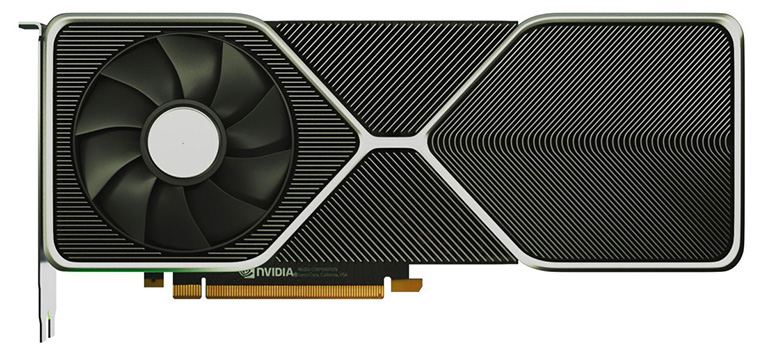Conclusion
GeForce RTX 3080 represents true 4K60 max-your-settings gameplay at an unexpectedly low $699.Nvidia latest Ampere architecture arrives in consumer graphics card space as the GeForce RTX 30-series GPUs. Initially comprised the RTX 3070, RTX 3080 and RTX 3090, debuting at different times over the course of the next month, they are primed to set new benchmark standards at the premium end of the market.
The largest, most powerful Ampere die is known as GA102, and it goes much bigger on floating-point cores yet ironically reduces the relative amount of silicon devoted to RT and Tensor cores when they've been firmly in the marketing headlights since being amalgamated into last-gen Turing two years ago.
Floating-point muscle is supported by oodles of bandwidth and general efficiencies across the chip. GA102 is a veritable monster with capability of pushing close to 40 TFLOPS of compute performance in unbridled form, clearly hinting at its datacentre provenance, from which Nvidia moulds gaming graphics.
GeForce RTX 3080 takes GA102 as its performance base but retains approximately 85 percent of its throughput potential through the use of 68 out of a possible 84 SMs. The backend, meanwhile, sacrifices width and a modicum of speed compared to a full-fat layout, but be in no doubt, RTX 3080 is a supremely fast card in its own right.
Fast enough, actually, to smash the last-gen GeForce RTX 2080 Super with which, for now, it shares a $699/£649 price tag. It's typically over 50 percent speedier, rising to 80 percent in a best-case scenario, and there's enough silicon artillery to roundly defeat the $1,199 RTX 2080 Ti in every game. RTX 3080 heralds a step-change in performance at the $699 price point.
More pragmatically, RTX 3080 delivers on the promise of 4K gaming at a fluid 60fps and, equally important for Nvidia's ambitions, for the first time, the ability to render at the same level with raytracing and DLSS turned on. That's a big deal.
The new GPU's frequency/voltage sweetspot occurs at a higher wattage than we're accustomed to in the consumer space, most likely resulting from using 8nm Samsung instead of 7nm TSMC. 320W requires a new FE cooler - and pretty it is - and again speaks to the high-performance datacentre characteristics baked into Ampere. The wattage isn't a problem for any premium gaming PC, of course, but it's worth knowing that availing oneself of excellent performance requires significantly extra wick, which is rarely a good thing. Even so, RTX 3080 tops the bang4buck and energy efficiency charts, but it could, and should, have done even better in the perf-per-watt metric.
There is plenty to like here. GeForce RTX 3080 represents true 4K60 max-your-settings gameplay at an unexpectedly low $699. It's hard to argue against performance or value, so we won't. All that's left to say is that if you want the fastest GPU money can currently buy, at least for the next week, GeForce RTX 3080 provides it with alarmingly good value.
Surprisingly good value
Attractive looks
Great build
4K60 with RT/DLSS
Quiet and relatively cool
Absolute Cuda monster
12-pin causes untidy cabling
HEXUS.where2buy
The Nvidia GeForce RTX 3080 Founders Edition card will be available from September 17 at Nvidia.com.
HEXUS.right2reply
At HEXUS, we invite the companies whose products we test to comment on our articles. If any company representatives for the products reviewed choose to respond, we'll publish their commentary here verbatim.








